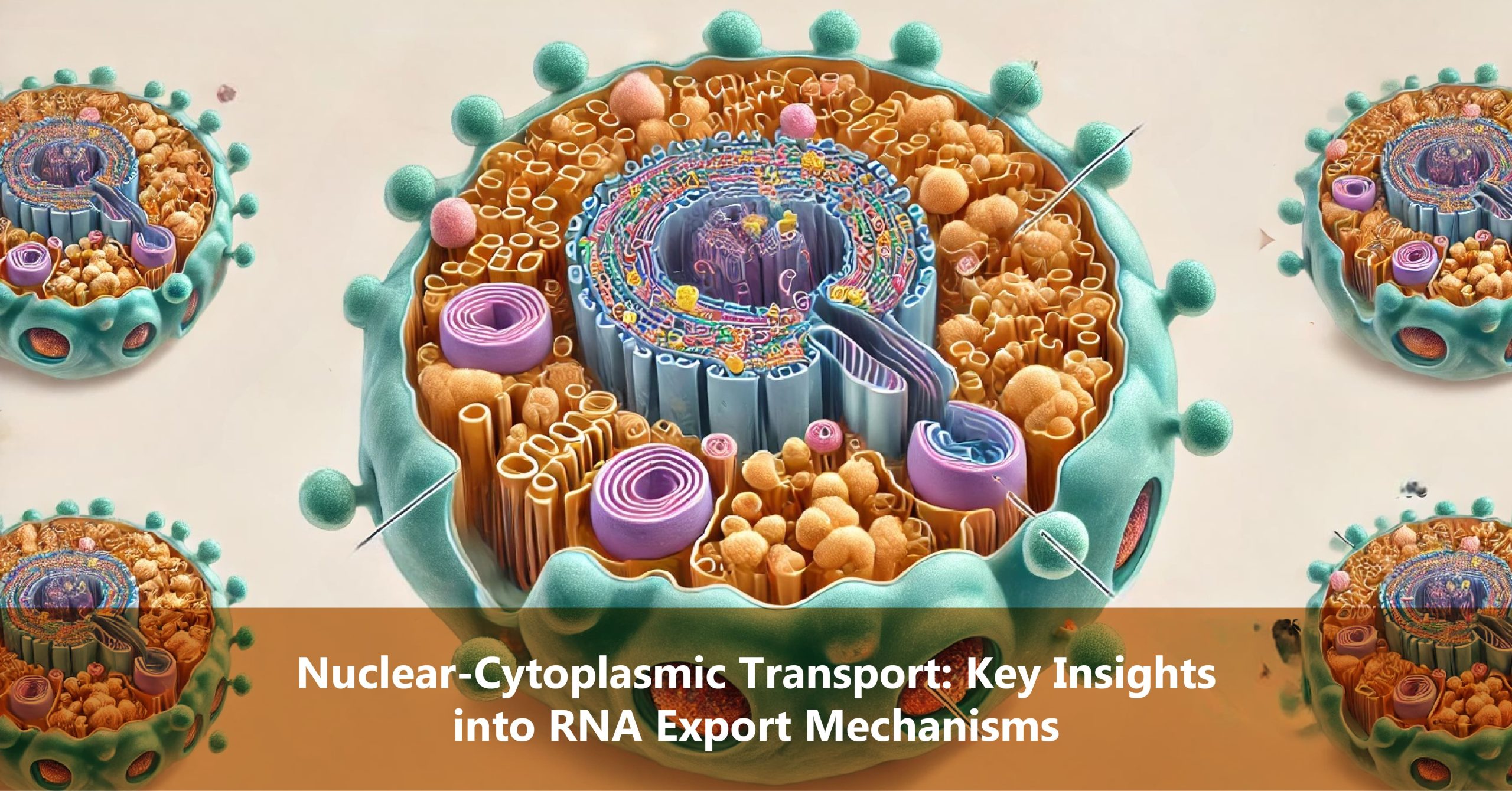Introduction
Nuclear-cytoplasmic transport, which facilitates the transport of cellular components in and out of the nucleus as well as the cytoplasm, is quite important for cell functioning. Molecular control of the transport mechanism for certain types of molecules, in this case, RNA from the nucleus to the cytoplasm, is very crucial, particularly in the field of gene regulation, the response of cells to external stimuli, and maintenance of cellular balance. The critical importance of these RNA export pathways in various cellular activities and processes, including the control of gene expression in a cell, makes it imperative to understand these processes. The work presented here also focuses on the molecular details of the eukaryotic protein export from the nucleus, covering the major nucleocytoplasmic transport pathways, regulation, and the components involved in the process.
The Nuclear Pore Complex: Gatekeeper of Nuclear-Cytoplasmic Transport
The nuclear pore complex (NPC) is a proteinaceous structure that assumes a multilayered, lamellar appearance, which serves as the conduit for material exchange between the nuclear-cytoplasmic compartments. Nucleoporins constitute the core scaffold structure and operate within the NPC, which is tasked with the selective transport of proteins, RNA, and ribonucleoprotein particles. The NPC provides sites for passive diffusion, yet it is engaged in the process of recognition of transported molecules as well as transport of these molecules out of the nucleus for ensuring correctness in the export from the nucleus. Nup159p and Nup82p serve as nucleoporins whose most important role is in mRNA export since these nucleoporins bind with the transport factors for RNA that target the nucleoporins.
mRNA Export Pathways and the Role of the Mex67p-Mtr2p Complex
Among all the processes that participate in the nuclear export of mRNA, the Mex67p-Mtr2p complex is the one that is primarily responsible for mRNA export. It is this complex made up of proteins that binds to RNA and the nuclear pore complex and enables the movement of mRNA from the cellular nucleus to its cytoplasm. The binding of the Mex67p protein is mRNA, while the protein Mtr2p acts as a linker protein between nucleoporins and RNA exporters, thereby tethering the RNA export complex to the NPC. For the mRNA export processes, such complex formation and stabilization are critical; a misstep in any of the processes may mean a catastrophe to RNA processing and export within the nucleus.
